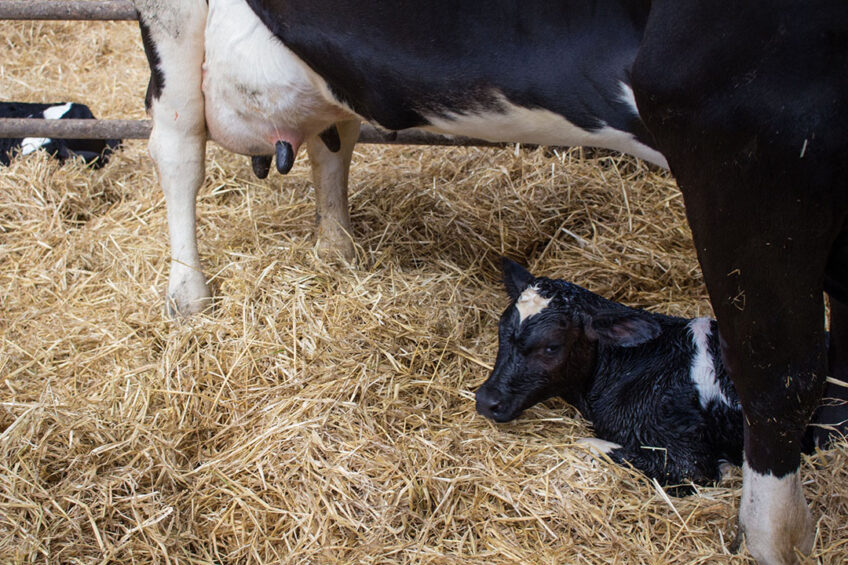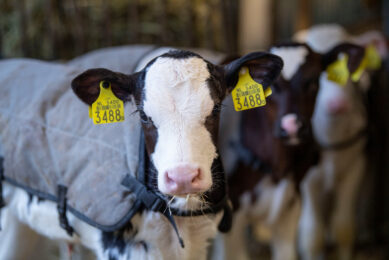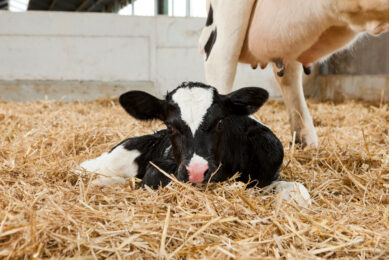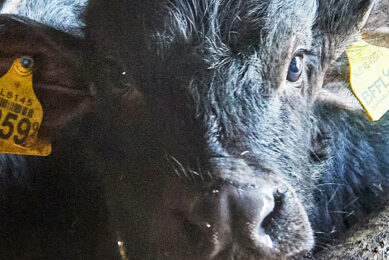Factors affecting calf colostrum utilisation

Colostrum is one of the most critical components of calf feeding as it provides essential nutrients to increase metabolism and stimulate digestive activity. Colostrum is also the source of passive immune protection that is essential for keeping a calf healthy. These factors should be considered to ensure that the calf can best utilise this valuable resource.
Cow-related factors
Age of the cow
This relates to increased exposure to pathogens. Most 2-year-old cows have antibodies to fewer pathogens than older cows. Cows in third or greater lactation generally produce colostrum with more immunoglobulin (Ig) than younger cows.
The ability of the cow to acquire antibodies
The colostrum used for dairy calves should come from cows that have been on the dairy for several months and have therefore had the opportunity to become exposed and respond to (produce antibodies) the pathogenic organisms endemic to the dairy.
Length of the dry period
A dry period of 3-4 weeks is needed to allow antibodies from the blood to be concentrated in the colostrum. Continuous milking (no dry period) has been found to reduce colostrum volume and antibody concentration.
First milking volume
Cows that produce a large quantity of colostrum (greater than 8kg) often produce lower concentrations of antibodies, likely due to dilution.
Milking the cow before parturition
Intensive pre-milking cows before calving to relieve congestion and discomfort greatly reduces the concentration of antibodies in the secretion after calving, and thus the calf will receive a much smaller amount during the first 24 hours of life than when sucking normal colostrum. For instance, the concentration of Ig in the postpartum secretion during the first 24 hours after calving may be only 1.6g/litre instead of a value of about 68g/litre. Hence, the secretion produced after calving by cows that have been intensively pre-milked is of less value to the calf than the same volume of normal colostrum.
Nutrition
The composition and quality of colostrum depend predominantly, among other management factors, on the nutrition of the dam. The improved protein and metabolisable energy (ME) statuses of the dam would enhance the utilisation of Ig by the calves either through an increased rate of intestinal absorption soon after parturition or by improving the physical condition of the calves and their capabilities to nurse. Failure to provide these nutrients from feed reduces the synthesis of colostrum and influences its quality. Additionally, metabolic processes in high-producing dairy cows are intensified compared to other animals, so inadequate nutrition may cause digestive dysfunctions, which leads to diseases affecting the composition of colostrum and animals’ productivity.
Vaccination
A good vaccination programme can improve colostrum quality. Vaccines stimulate increased maternal antibody production and aid in passively immunising the calf. The dam should be vaccinated against rotavirus, coronavirus, clostridium and Escherichia coli during the dry period.
Colostrum-related factors
Cleanliness
Dirty colostrum may inoculate the calf’s system with pathogens to which the calf has no immunity. The presence of pathogens triggers more rapid closure of the pathways that enable a newborn calf to absorb colostral antibodies. Successful colostrum management should, therefore, require careful attention to cleanliness of hands and equipment, treatment of infected dams before parturition and proper preservation measures and feeding protocols.
Timing of colostrum intake
The efficiency of Ig absorption over the first 24 hours post-calving decreases after 6 hours reaching its minimal level at 24 hours of age, following the phenomenon known as gut closure. Such a relationship between age at first feeding of colostrum and the efficiency of Ig absorption could be explained in a variety of ways:
- First is the maturation of the intestinal epithelium, which switches off the absorption mechanism, except for a few cells still capable of absorbing colostral Ig.
- Second, there is increased enzyme activity in the small intestines of the calves with advanced age (hours). At this point, digestive enzymes begin to break down the lg into amino acids, thus eliminating their disease-fighting capabilities.
- Third, with long times of colostrum deprivation, there is a greater chance of inhibiting the defense mechanism if bacteria such as E. coli enter the digestive tract first. These bacteria attach to the gut walls, thus inhibiting the subsequent absorption and attachment of colostral lg.
Amount of colostrum to be fed
This factor is particularly important for calves that are unable to effectively suck their dams. In this case, calves should be force-fed the colostrum through nipples, pails, stomach tubes, etc., at 50-80ml of colostrum per kg of body weight. This would usually ensure a high level of serum Ig by 24 hours of age.
Colostrum feeding method
In one study, 42% of the calves failed to absorb appreciable Ig when left to nurse their dam for 24 hours. After separation from their dam, they were fed 1 litre of pooled colostrum during the next 24 hours. Most calves showed an increase in Ig following the second day’s feeding, but about 12% did not. Of these, 13% died compared with 3.9% of all calves. Overall, the Ig levels of all the calves that died were two-thirds that of those that survived. This study suggests:
- allowing calves to nurse their dam deprives 40% of the calves of adequate immunity; thus hand-feeding seems warranted;
- feeding colostrum on day 2 helps improve blood levels in many calves and also fosters a respectable level of livability even among calves that fail to absorb much Ig.
Preservation of excess colostrum
Storing and feeding excess colostrum to young calves is a popular management practice. Extreme care should be taken that only colostrum from healthy cows is used, as this route can transfer some diseases, such as Johne’s disease and bovine leukemia. Freezing is a simple and effective option for larger units (more than 50 cows). Adding an appropriate acid to colostrum, for example 0.7% propionic acid by weight, should provide an environment too acidic for the growth of undesirable types of bacteria. Propionic acid available for preserving high-moisture corn can be used for this purpose. The colostrum preservative is not usually necessary during the cool months of the year but may be advisable during the summer months when high temperatures may increase protein breakdown and spoil untreated colostrum.
Environmental factors
Cows exposed to heat stress (38°C) may have lower protein, fat and lactose content of colostrum compared to those kept at normothermic temperature (20°C). However, the Ig concentration of colostrum produced under heat stress conditions was not below the minimum requirements for passive immunisation of newborn calves.
Cold stress, on the other hand, has negative effects on the absorptive function of the intestine, and hence on the concentration of all classes of colostral Ig in the serum of the hypothermic calves kept at 1°C. It is, therefore, important to protect calves against cold by all possible means when attempting to achieve higher immunity levels and improved performance.
References are available from the author upon request.
Join 13,000+ subscribers
Subscribe to our newsletter to stay updated about all the need-to-know content in the dairy sector, two times a week.










